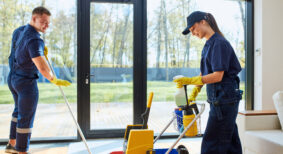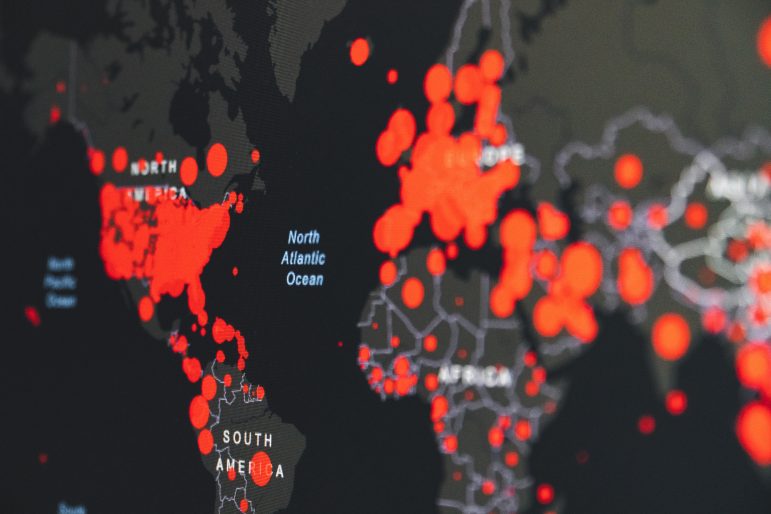As of May 2021, we seem to be inching our way out of the COVID-19 pandemic. The U.S. Centers for Disease Control and Prevention has announced that those fully vaccinated no longer need to wear masks outside or inside, in most situations.
Many of us are feeling some relief. We know that with the pandemic behind us, our lives and businesses can return to some sort of normalcy. Further, many of us believe that a pandemic like COVID-19—which has infected more than 174 million people, causing 3.7 million deaths—will likely never happen again.
Unfortunately, that may not be the case. Although COVID-19 is one of the most severe pandemics since the Spanish Flu of 1918, which killed more than 50 million people, we have had other pandemics since then, and we are likely to see more in the future. We need to look to the past to find out what we can learn from those earlier pandemics.
Past pandemics
1957: Asian Flu: One of the most underreported pandemics was the 1957 Asian flu. It travelled from Hong Kong to the United States and became widespread in England. A second wave followed in 1958. Eventually, more than a million deaths globally were reported—116,000 of them in the United States.
1981: HIV/AIDS: Although this pandemic has been widely reported, many people do not realize that it dates back several decades. HIV/AIDS is believed to have developed from a chimpanzee virus circulating in West Africa as far back as the 1920s.
It spread to Haiti in the 1960s before progressing into the United States in the 1970s. However, it wasn’t until the early 1980s that the public heard much about HIV/AIDS when it started spreading very quickly. Today, about 35 million people worldwide have died from AIDS.
2003 SARS: SARS, not COVID-19, is viewed by public health officials as the world’s “wake-up call” when it comes to worldwide pandemics. The lessons from SARS have helped keep diseases such as H1N1 (swine flu), Ebola, and Zika from becoming global pandemics. However, unfortunately, this wake-up call was generally unheeded by the public and officials in some parts of the world.
The severe acute respiratory syndrome (SARS) outbreak is believed to have started with bats, spread to cats, and from cats to humans in China. In time, cases were identified in 26 other countries, more than 8,000 people were infected, and 774 died.
Unlike COVID-19, which appears to have been tamed by vaccines, no vaccines were developed to help prevent the spread of SARS. Quarantine efforts proved most effective, and within about a year, SARS essentially disappeared.
Taiwan vs. COVID-19
COVID-19 impacted some countries less than others. Even without the vaccine, Australia and New Zealand were the first to “conquer” the disease. This was mainly accomplished with lockdowns. In both countries, entire cities were shuttered for months at a time.*
Meanwhile, in Taiwan, just 81 miles from the disease’s epicentre in China, there were no lockdowns. Its 23 million people continued to go to work and school and live their lives as usual. How did this happen?
RELATED: How Canada can learn from Taiwan in beating COVID-19
Mike Sawchuk, a Canadian cleaning consultant and business advisor, says Taiwan heeded the SARS wake-up call very early. “They knew when it was time to act, and they acted fast. Taiwan was caught off-guard by SARS, so as soon as they heard reports out of China of an unusual flu-type outbreak, they took significant steps immediately.”
Those steps included the following:
- Taiwan activated its “epidemic command center,” created in 2009 and based on lessons from SARS. “Taiwan was one of the few countries in the world to have such a command center,” mentions Sawchuk.
- Borders were closed, and mandatory quarantines were started.
- Mask-wearing and crowd control measures were put into place and enforced by the country’s military.
- Proper cleaning and disinfecting measures were taken immediately. “Taiwan public health officials knew effective cleaning was essential, and they took steps right away,” explains Sawchuk.
- Daily briefings discussed the dangers of the disease and why precautions were necessary. “These daily briefings were sometimes twice per day [and started] long before similar briefings were happening in Canada or the United States,” says Sawchuk. “Taiwan officials were very transparent about the disease, and [the briefings] helped encourage the people of Taiwan to trust their government.”
Today, Taiwan is seeing a resurgence of the disease. Again, the country has acted fast in response. The cities of Taipei and New Taipei are under lockdown. Vaccinations have increased sharply. And the populace appears to be taking the threat seriously, essential to ending the surge.
Expanding the role of cleaning
“As soon as reports started coming out, we also knew cleaning—effective cleaning—would play a significant role in slowing the spread of [COVID-19],” says Michael Wilson with AFFLINK. “However, there was not a concerted effort, at least at first. Most in the professional cleaning industry knew something had to be done, but precisely what was unclear.”
Almost immediately, jansan cleaning solution manufacturers reported that distributors and their customers were clamouring for disinfectants. Most manufacturers ramped up production accordingly.
Old technologies, such as UV-C and electrostatic sprayers, found new purposes. Both technologies have been used for industrial applications for more than a century. Their disinfecting potential was now needed to kill the virus.
Yet, a universal response was still lacking. To fill the need, AFFLINK began providing training and guidance to its more than 350 distributor-members in the U.S. “We wanted to educate them so they could instruct their customers on proper cleaning and disinfecting techniques. And if [their customers] selected UV-C systems, electrostatic sprayers, or other disinfecting technologies, we wanted to be sure they were able to instruct them on how to use them effectively and properly.”
On a much broader scale, ISSA’s Global Biorisk Advisory Council™ (GBAC) started providing instruction and guidance for the entire professional cleaning industry as well as assistance to government, commercial, and private entities. GBAC’s goal is to help organizations quickly address a hazardous situation and limit its impact.
Further, significant players in the professional cleaning industry lent their assistance. For example, Kimberly-Clark Professional provided scholarships to small and women-owned businesses worldwide so that they could take advantage of the GBAC training.
Our wake-up call
Although many of us did not learn from SARS, we are learning a lot from COVID-19. We know more pandemics are likely to occur. We just do not know when.
We have also learned from countries like Taiwan, Australia, and New Zealand that steps must be taken quickly to stop the spread. “We certainly do not like wearing masks, social distancing, and lockdowns. We may even be politically opposed to them,” says Sawchuk. “But the facts speak for themselves. They can stop a virus from spreading.”
As for the professional cleaning industry, Wilson adds, “We have a much better understanding of effective cleaning and disinfecting methods and technologies, we understand the importance of distributor and custodial training, and we now have organizations such as GBAC to help provide guidance. We should be much better prepared if something like this should happen again.”
This article originally appeared on ISSA.com.








